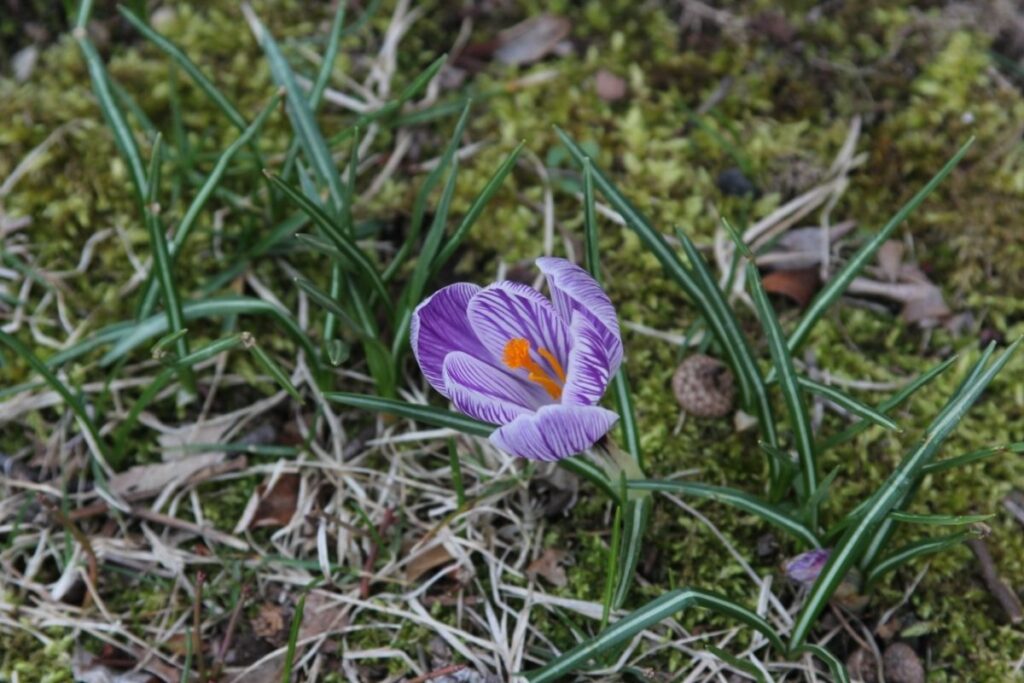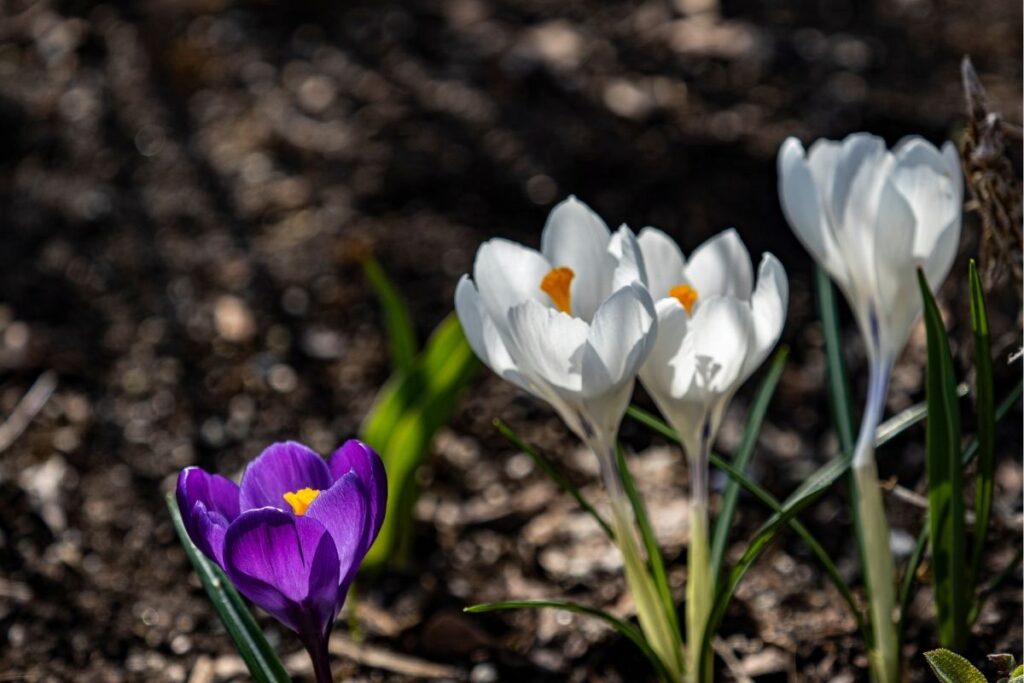There are hundreds of varieties of crocus flowers. They come in different colors, sizes, and they can be found all around the world. The most common types of crocuses are spring-flowering bulbs that bloom from late winter to early summer.
Spring-flowering bulbs have a long stem with a single flower at the top. These flowers usually have five petals and look like tulips or daffodils.
There are also fall-flowering bulbs that grow during autumn and bloom in spring. Fall-flowering bulbs have two or three stems with one or more flowers on each stem. The flowers often have six petals and look similar to snowdrops.
Spring-flowering bulbs can be divided into several groups based on their color.

White crocuses are the most popular type of spring-flowering bulb. They are very easy to grow and require little maintenance. They have a white flower with green leaves and grow up to four inches tall.
Yellow crocuses are another popular variety of spring-flowering bulbs. They have bright yellow flowers and grow about an inch tall.
If you would like to find out more about the specific types of crocuses that currently exist, then carry on reading!
1. Crocus Bavella

The Bavella is a small bulbous plant (created by Alan Edwards) with a single flower, and that blooms quite late in the season. It has a long stem, and it grows up to 10 cm tall. The color of this flower is a stunning deep purple, whose petals lead into a golden orange center.
2. Crocus Miss Vain

This species of crocus is quite thin when planted, so to make full use of its white petals and orange centers, you should plant a few bulbs at a time. Its blooms are known for their goblet shape, and while they do contain some scent, you shouldn’t rely on them to fuel a full-smelling garden!
3. Crocus Yakarianus

This variety of crocus is native to Turkey, and it is a little different from the rest of the crocus varieties as the petals are sparsely placed and all point at an upward angle.
It is actually considered to be a new species, and the color variations (that include lilac, white, and blue) all delicately merge into a yellow center that makes it incredibly striking.
4. Crocus Romance

Romance is a very popular crocus because of its beautiful color combination. It comes in many shades of orange and yellow, and it can sometimes even include red, salmon, and peach.
Its hardy nature and reliable growth patterns make it a firm favorite of many gardeners, and its blooming occurs between late winter and early spring.
5. Crocus Dorothy

Dorothy is a classic crocus that is widely available. It comes in a wide range of colors, including yellow, orange, and lavender – but all of its petals are bi-colored!
This crocus is very popular among gardeners because of its ability to withstand cold weather, which is especially handy because it starts to bloom in early February.
6. Crocus Skyline

Skyline is a rare type of crocus, and it can be difficult to find – however, the search for its silvery-blue color in your garden is definitely worth it. Its texture is also unusual because it has a tufted exterior, which stems from its few dark green leaves.
7. Crocus Zenith

The Zenith’s blooms come in various shades of light blue and violet, but the ones that stand out the most are the light pink and pale purple varieties.
Since this crocus is drawn to alpine climates, particularly in eastern Scotland, this crocus can bloom from the end of January – but you will have to look out for it carefully as it only grows to around two inches tall!
8. Snow Crocus

Snow crocuses are a great addition to any early spring garden. They most often bloom white petals, although they can also show blue, yellow, and purple petals!
Interestingly, they will open up and shut depending on how much sun they are receiving, which means that they can change their ‘size’ multiple times throughout the day.
9. Dutch Crocus

A Dutch crocus is a hybrid crocus that was created by combining several other types of crocuses together. It is much larger than the average crocus, and it has a bright yellow center surrounded by a ring of purple petals.
10. Spring Beauty Crocus

This flower blooms early in spring, but it doesn’t last long – it prefers full sun and well-drained soils, so it requires a lot of attention and maintenance.
Its beautiful petals are bi-colored and the colors move from dark purple to lilac, from white to yellow. This visual variety makes it perfect for garden borders.
11. Crocus Zwanenburg Bronze

This variety of crocus has a flame-like appearance, with maroon exterior petals leading into a golden yellow center. It does have more of a scent than most crocuses which makes it a brilliant species to have in your garden, but it will need to be in full view of the sun to thrive well.
12. Crocus Roseus

Roseus is a rare type of rose-colored crocus that is native to Europe. The flowers are typically smaller than those of other crocuses, and they have an amazing fragrance. Their distinctive six-petaled construction shows off the small white heart at their center.
13. Crocus Barr’s Purple

Barr’s Purple is a bowl-shaped bloom with a white base that travels to delicate amethyst points. It is especially useful for its deer-resistant nature, and its average height is around 6 inches, which makes it a wonderful choice for a low garden border.
14. Crocus Firefly

As one of the smallest crocus varieties, the crocus firefly certainly knows how to stand out with its lilac petals and golden ‘throat’!
This deer-resistant bloom will only open up when the sun is shining, and they absolutely detest rain – it may not be ideal to plant them in an environment that doesn’t get lots of sunny weather.
15. Crocus Orange Monarch

This crocus is named after the Monarch butterfly, and it has an incredible balance between orange and black tints on its petals to create a truly striking crocus.
The flower will bloom in the early spring, but it should be planted in an area that can access lots of sunlight – though you won’t need to worry about temperature as its hardiness means it can withstand the cold.
16. Crocus Jeanne d’Arc

Aptly named after the famous Joan of Arc, this is an extra hardy species of crocus that can thrive in gritty and poor soils and little water.
The delicate white blooms are covered in thin purple veins, which does actually add to the shiny effect the goblets create when they are caught by the sunlight.
17. Crocus Blue Pearl

This species of crocus can actually produce up to four flowers with each planted bulb, which is fairly unusual for this flower. Its leafy foliage is more of a gray color, which blends well with the silver-blue petals and golden center.
18. Autumn Crocus

The autumn crocus is a very popular species because it blooms during the fall months. It is a bi-color flower that is usually bright purple and lilac, with the outer petals having a darker hue.
The perennial doesn’t actually have any leafy foliage when it blooms because these only appear in the spring and disappear in the summer – which leaves the flowers all alone in the fall.
19. Bieberstein’s Crocus

This is one of the largest types of crocus around, and its tufted green leaves and lilac petals make it a wonderful addition as a centerpiece for gardens. It is native to Turkey and Iran, and it likes to bloom in the fall when the weather cools down.
Frequently Asked Questions
What Do I Need To Plant My Crocus Bulbs?
You’ll need a container that’s large enough to hold all the bulbs you plan to plant. You should also choose a planting medium that drains well, such as peat moss or perlite.
Once you’ve selected your planting medium, simply place the bulbs in the holes you’ve made in the soil, making sure not to bury them too deeply. Then cover the bulbs with additional soil, keeping it moist until they begin to sprout into the sun to thrive well.
How Many Crocus Bulbs Should I Buy?
It depends on what kind of crocus bulb you want to purchase. Some varieties come in single bulbs, while others are sold in sets of three or four. Generally speaking, the more bulbs you buy, the more bulbs you buy, the bigger your investment will be.
However, if you’re planning on having a few different kinds of crocuses growing in your garden, then buying just a couple of each variety will save money over time.
To Sum Up…
If you’re looking for something unique to add to your garden, then consider adding one or more of these crocuses to your collection!
They are easy to grow, require little maintenance, and offer a stunning display of color. While some variations of crocus are quite rare, most species are very easily accessible in your local garden center (or you can order them online).







